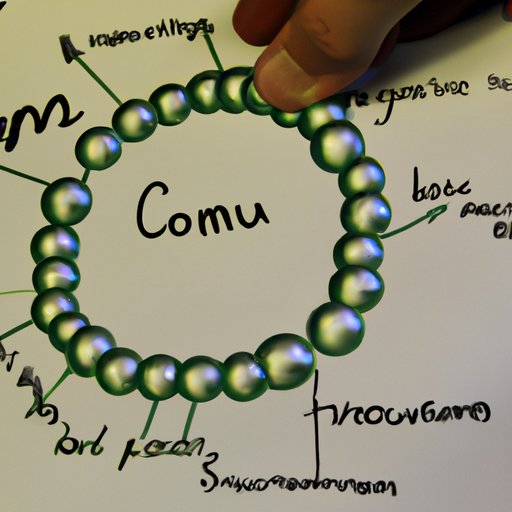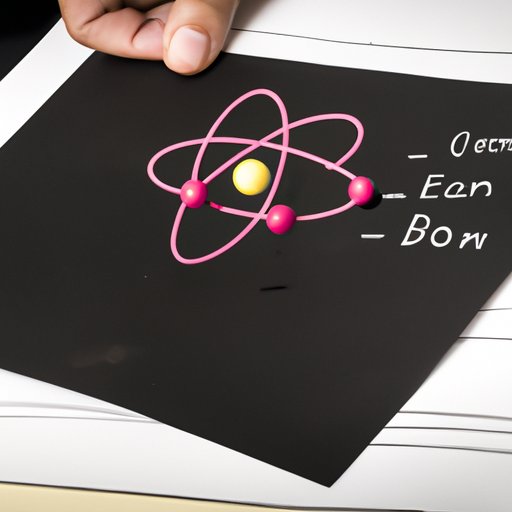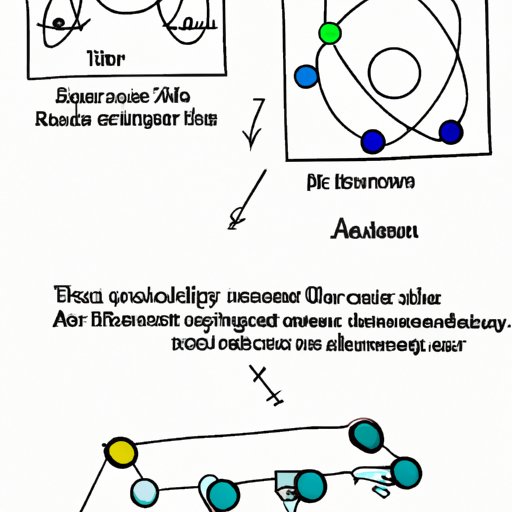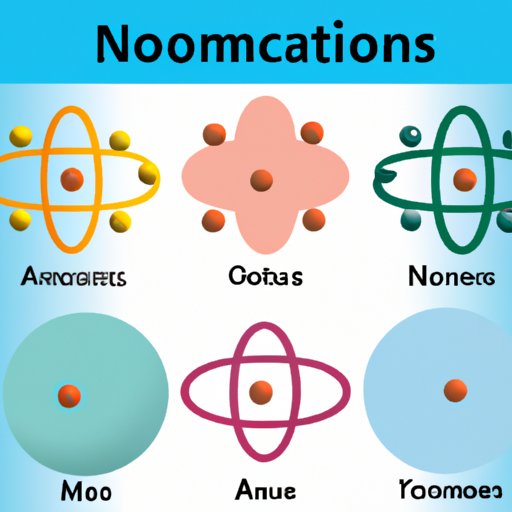Introduction
Atoms are the smallest unit of matter that retain their chemical properties. They are made up of protons, neutrons, and electrons, and can combine with other atoms to form molecules. Understanding atoms is essential to learning about science, and this comprehensive guide will explore what atoms are, their structure, basic theory, how they interact and form bonds, types of atoms, properties, and a brief history of scientific discoveries.

Exploring the Atomic Structure of Matter
What is an atom? An atom is the smallest unit of matter that retains its chemical properties. Every atom consists of a nucleus made up of protons and neutrons, and a cloud of electrons orbiting around the nucleus. These three components make up the parts of an atom.
The role of atomic structure in matter is to determine the physical and chemical properties of the element. The number of protons in an atom’s nucleus determines what element it is, while the number of electrons orbiting the nucleus determines its reactivity. For example, oxygen has eight protons and eight electrons, while carbon has six protons and six electrons.
The Basics of Atomic Theory
John Dalton’s atomic theory states that all matter is composed of tiny particles called atoms. He also proposed that atoms of the same element are identical in size, mass, and other properties, and that atoms of different elements differ in these properties.
Ernest Rutherford proposed the nuclear model of the atom in 1911. According to this model, the atom is composed of a positively charged nucleus surrounded by negatively charged electrons. This model was further refined by Niels Bohr, who proposed the atomic model in which electrons orbit the nucleus in specific energy levels.
How Atoms Form Bonds and Interact
Atoms form chemical bonds by sharing or transferring electrons with other atoms. There are two main types of chemical bonds: covalent and ionic. Covalent bonds involve the sharing of electrons between two atoms, while ionic bonds involve the transfer of electrons from one atom to another. Intramolecular forces are the forces that hold atoms together in a molecule, while intermolecular forces are the forces between molecules.
A Guide to the Different Types of Atoms
Atoms can be classified into three main categories: metals, nonmetals, and metalloids. Metals are characterized by their ability to conduct electricity and heat, while nonmetals are characterized by their lack of electrical and thermal conductivity. Metalloids have both metallic and non-metallic properties.

Investigating the Properties of Atoms
Atomic radius is the distance between the center of an atom and the outermost shell of electrons. Ionization energy is the amount of energy required to remove an electron from an atom. Electron affinity is the amount of energy released when an electron is added to an atom.

A History of Scientific Discoveries About Atoms
The concept of atoms dates back to Ancient Greek philosophers such as Democritus and Leucippus, who proposed that all matter is composed of tiny indivisible particles. In the 18th century, scientists such as John Dalton, Joseph Gay-Lussac, and Antoine Lavoisier made significant contributions to the study of atoms. In the 20th century, Ernest Rutherford and Niels Bohr developed the nuclear and atomic models, respectively.

An Overview of Atomic Physics
Atomic physics is the study of the structure and behavior of atoms. It is based on quantum mechanics, which states that particles can behave as both waves and particles. This wave-particle duality is best explained by Heisenberg’s Uncertainty Principle, which states that it is impossible to know both the position and momentum of a particle at the same time.
Conclusion
This article provided an overview of atoms in science, exploring their structure, basic theory, how they interact and form bonds, types of atoms, properties, and a brief history of scientific discoveries. Understanding atoms is essential to learning about science, and this comprehensive guide has provided a comprehensive introduction to the topic.
(Note: Is this article not meeting your expectations? Do you have knowledge or insights to share? Unlock new opportunities and expand your reach by joining our authors team. Click Registration to join us and share your expertise with our readers.)
